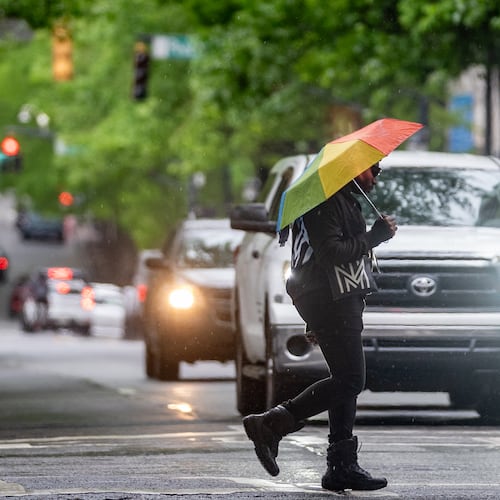When the weather forecast in Atlanta calls for a freeze warning, that means temperatures will be below freezing long enough to bring risk of harm to plants, pipes and pets.
However, such warnings are only issued in the fall up until the end of the growing season, which is marked by the first widespread freeze, or at the start of the growing season in the spring, when it’s late enough to cause damage to new plants, according to the National Weather Service.
Frost advisories follow the same timeframe criteria, only they’re issued when lows are forecast to be 33 to 36 degrees, so not quite freezing, on clear and calm nights during the growing season.
To help you prepare for colder weather, here are a few things you need to know.
Home tips
Frozen pipes can lead to a big mess. Here are a few tips and websites for guidance on avoiding weather-related disasters at home:
- Allow a small trickle of water to run overnight, preferably through a faucet on an outside wall.
- Open kitchen and bathroom cabinets so warmer air can circulate below the sinks.
- Know the locations of your shut-off valves, in case a pipe bursts.
Plants
If you haven’t already taken steps to protect your plants, here a few ways to care for them during the cold weather:
- Bring your smaller container plants, especially succulents, indoors. Mulch or cover outdoor plants with straw, blankets or cardboard.
- To prevent heat loss from sides of containers, push together large outdoor pots and wrap the bases with plastic, burlap or a blanket.
- Rosemary topiaries or potted citrus plants or roses should be moved close to the wall of your house for warmth. Cover plants such as camellias with an old sheet or, for plants taller than 3 feet, black plastic.
- Be sure to turn off automatic sprinklers, detach hoses from faucets and wrap the faucets to protect outdoor pipes.
- Don't worry if plant leaves wilt; they protect themselves against cold by dehydrating themselves. Given time, most will perk back up.
- If you see damage from frost (black or purple flaccid leaves or stems), particularly on woody perennials, wait until the spring to prune so as to not shear off healthy tissue.
Pets
Pet owners should take special precautions with their animals when temperatures drop. It’s best to keep all pets indoors.
Dogs that live outdoors should have a doghouse that’s elevated a few inches and has cedar shavings, straw or a blanket to trap body heat. Pets that spend time outdoors need more food because cold weather saps energy.
Cats will curl up against almost anything to stay warm, including car engines. Before you turn your engine on, check beneath the car or make plenty of noise by honking the horn.
Some animals can safely remain outside longer in the winter than others. Long-haired breeds like huskies will do better in cold weather than short-haired breeds like dachshunds. Your pet’s health also will affect how long the pet can stay out. Conditions such as diabetes, heart disease, kidney disease and hormonal imbalances can compromise a pet’s ability to regulate body heat.
Consider dog sweaters during walks. When outside with your pets, watch them for signs of discomfort. If they whine, shiver, seem anxious, slow down or stop moving, or start to look for warm places to burrow, they’re saying they want to get back someplace warm.
About the Author
Keep Reading
The Latest
Featured

